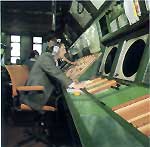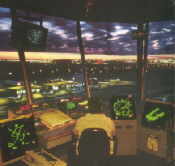The daily routine of Air Traffic Controller is very demanding with various factors of safety he has to maintain. The round the clock job of providing air traffic services is divided into shifts manned by established and stable teams. Although the Air Traffic Controller is an individual professional, he is part of a large team. He coordinates with other sectors, other control centres, essentially quite a few other units, while controlling traffic, and yet the Air Traffic Controller is essentially alone when he has to take that decision which is to taken in splits of second. However, the cooperation and coordination makes it possible for him to take correct decision and thus it is the backbone for a smooth and safe working environment.

Sitting like a rock for hours together the stoic Controller has to have an accurate mental map of a dynamic 3-D picture (altitude of an aircraft above the sea level, bearing from a navigational aid, distance from the aid) of the moving aircraft at any point of time. It is indeed a 4-D picture with time occupying the fourth dimension.
Based on the mental picture that he will create, update and foresee with time involved, he has to plan the future course of various aircraft which may have converge or diverge over the navigational aid. It also requires for him to assess the potential problem, priority of tasks, determine and issue appropriate instructions and ensure compliance with them. Controller actually fights against time to implement his decisions.
Apart from deriving information from mental mapping, a controller has to talk and understand aircraft transmissions and issue appropriate instructions, mark the flight progress strips and monitor the coordination effected with other adjacent Air Traffic Services (ATS) units. These tasks performed under time pressure are aimed at achieving maximum safety and efficiency leading to stressful working condition.

